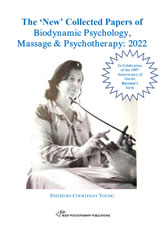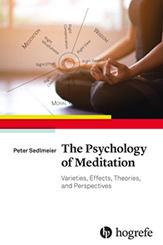True Companions: A Book for Everyone About the Relationships That See Us Through
Reviewed by Nancy Eichhorn
How can I feel connected to someone I have never met and in turn feel more engaged in my own real-life...
The Weirdest People in the World: How the West Became Psychologically Peculiar and Particularly...
Reviewed by: Lily Wu
What is WEIRD? WEIRD is an acronym for Western, Educated, Industrialised, Rich and Democratic. Henrich and his colleagues coined it about...
Humanual: A manual for being human: An Epic Journey to your expanded self
There are numerous themes woven in the three parts of this text that bring readers into and through a journey that if taken with intention and reflection, has the potential to result in significant changes. I appreciated Betsy's inclusion of joy, laughter, and play and how swaying, rocking, rolling, and bouncing all invite aliveness into our body. A question she offered, stays with me: “Is this contributing to my health and well-being, and a fuller version of myself or not?” (pg. 215). I take a moment to reflect before making a choice. Being in the moment, conscious.
Therapy in the Age of Neuroscience: A Guide for Counsellors and Therapists
“In Therapy in the Age of Neuroscience, psychotherapist Peter Afford boldly integrates the voices of contemporary neuroscientists into a therapist-relevant narrative that interlaces psychological constructs including diagnostic features with a knowledge of the relevant role that specific neural structures play in movements, thoughts and feelings. Through the lens of a therapist, the reader is informed how a knowledge of neuroscience can inform, support and at times transform treatment models relevant to mental health.” Stephen W. Porges knows quality writing regarding neuroscience and polyvagal theory. I do not think readers will be disappointed.
Want: A Novel
In Want, Lynn Steger Strong writes for the times we’re living in. Saddled with plenty of responsibilities, and jobs that simply don’t pay enough, Elizabeth is very much a 21st century woman. Her dissatisfaction with her life, and her desire for everything she does not have is what feeds the novel's core conflicts. Steger Strong asks us: Why must a woman with so much still want more?
Brown Album: Essays on Exile and Identity
In a deeply raw, emotional, and sentimental coming of age story, Porochista Khakpour dives into an exploration of her heritage, culture, and identity. Brown Album is far more than a collection of essays, it is a collection of memories showcasing self-discovery as a first-generation immigrant from Iran as well as shining a light on the Iranian-American experience.
The Shattered Oak: Overcoming Domestic Abuse and a Misdiagnosis of Mental Illness
I finished reading The Shattered Oak: Overcoming Domestic Abuse and a Misdiagnosis of Mental Illness and realized I hadn’t drawn a full breath since page one. At some points in the text, I simply stopped breathing. The character’s voice drew me in. Barbara’s first-person voice created an impact. She was distant in moments, disconnected from reality, and then smack dab in the brunt truth of her situation. She sounded emotionally and developmentally stunted; considering the content of her experiences, her tone of voice and language use rang true.
Together: The Healing Power of Human Connection in a Sometimes Lonely World
In 2018, one block away from my university dorm, a student committed suicide. His head was in a plastic bag when his roommate walked in and found him dead. Rumors were flying around: victim was an Indian. No, he was an African. Wasn’t he Chinese? Rumors guessed about potential death causes, and one important factor was loneliness.
Loneliness has become a crucial problem in contemporary societies, and human connection in social settings help us heal both physically and mentally. Such is the theme of the book Together: The Healing Power of Human Connection in a Sometimes Lonely World.
User Friendly: How the Hidden Rules of Design are Changing the Way We Live,...
I found myself fidgeting and incomplete after only six hours of a power outage at my house yesterday. Needless to say, every day we wake up to our alarms beeping like a virtual mom then head to the espresso maker bringing fresh smells of the day within seconds. Our driver is on his way to pick us up through applications such as Uber. We unconsciously check our phones five times in a minute so we can engage with our friends across the globe with several taps and clicks on the little shining screens. It’s not inaccurate to say that we are all ‘cyborgs’: we are half human, half machine. We are incomplete without technology.
You Die at the End: Meditations on Mortality and the Human Condition
You Die at the End consists of 180 “meditations”, Ferraiolo’s “ruminations” in response to Biblical scriptures, Old Testament writings. Early Stoics believed in a higher power (Zeus, God, the Universe) so Ferraiolo’s use of Christian scriptures was not surprising. Each scripture is followed by Ferraiolo’s interpretation of and implication in our lives today. His ‘ruminations’ typically start with a question—a guide to look within, to assess our self-perceptions and reasons for being— followed by startling reflections and revelations.














